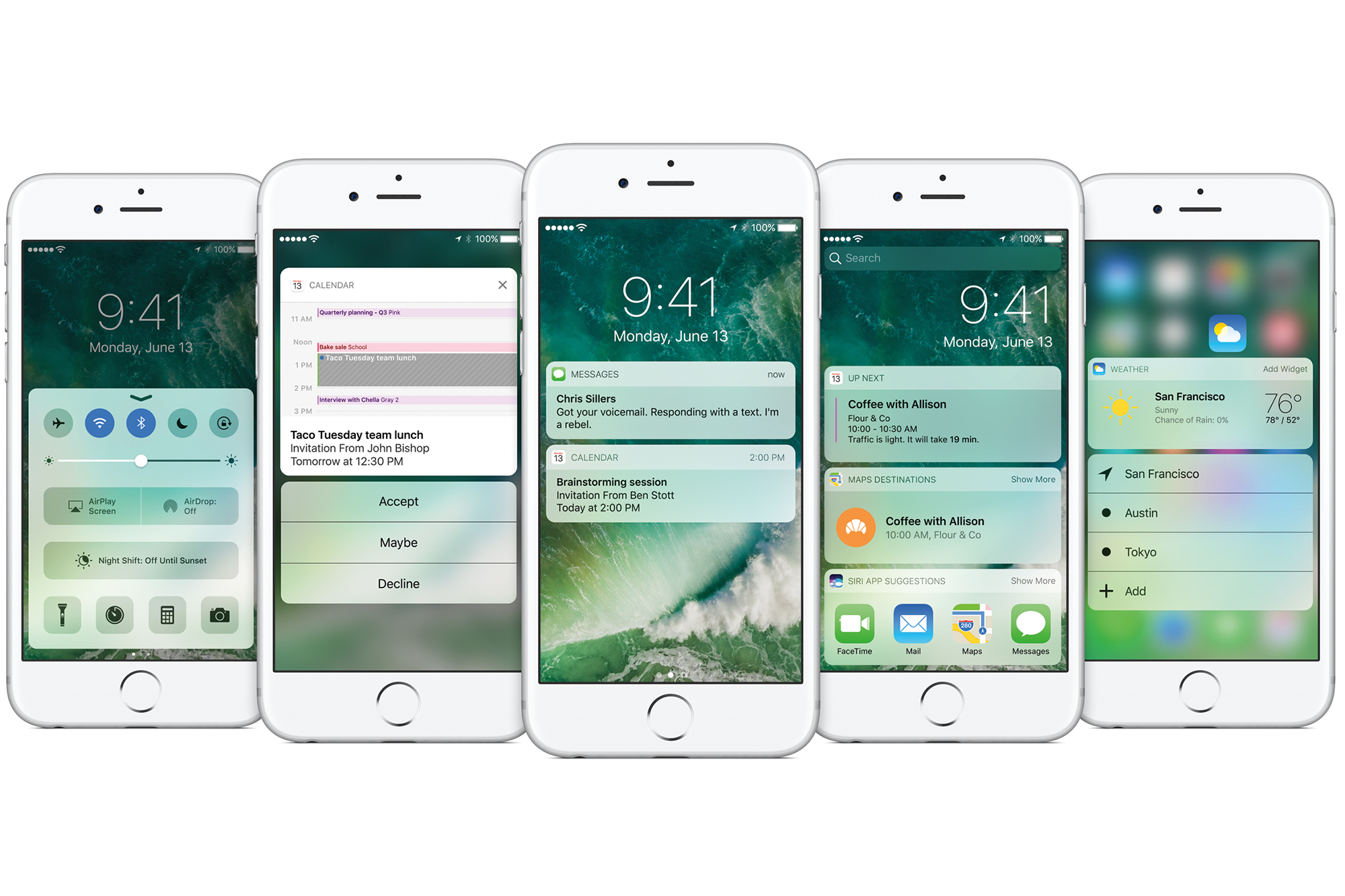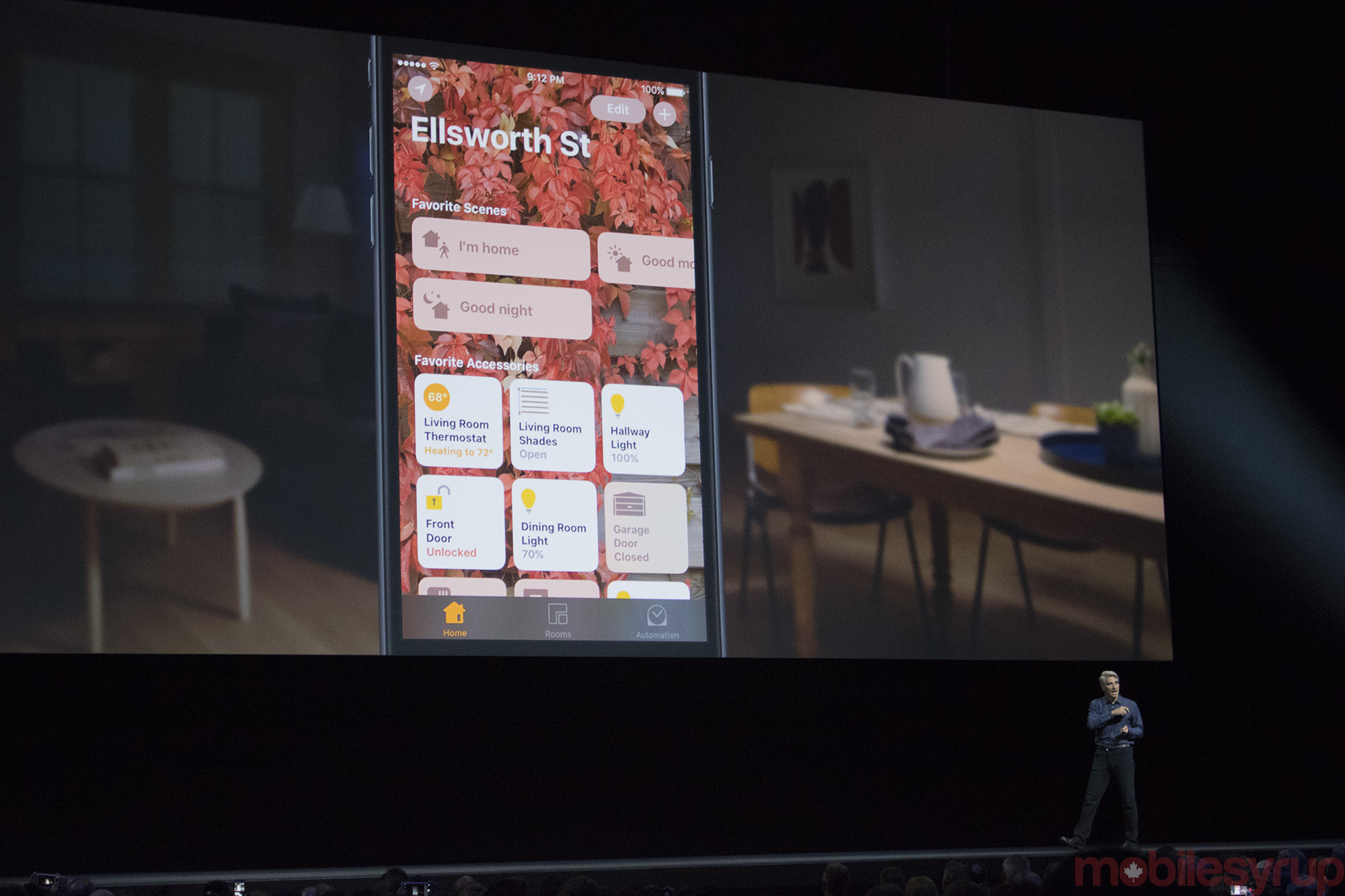
Last Monday Apple revealed the next iteration of its mobile operating system, iOS 10. While the company claims the software update is its “largest yet,” in reality, iOS 10 feels more like an incremental shift forward in most respects, though the the update does mark Apple’s walled-garden approach to software beginning to erode.
In some ways, iOS 10 almost feels like an admission by Apple that it needs to enlist the help of its third-party partners to stay on top, a fact most developers are likely more than please with.
New features such as a dedicated Messages apps store, a revamped lockscreen and additional Siri functionality are some of the iOS 10’s stand out additions. The operating system is set to launch publicly this fall and a developer version and an early build is currently available to developers. At WWDC 2016 this week we got an early look at Apple’s upcoming mobile operating system.
Below are five of iOS 10’s most useful new features.
1. Messages goes third-party
Analysts have been touting for months that the next great mobile war will take place on messaging platforms like Facebook Messenger, Snapchat and Google’s upcoming Allo. It looks like Apple holds the same opinion after revealing it plans to open Messages up to third-party developers, as well as plans to launch a dedicated Messages app store, a fact the company didn’t delve into during its keynote on Monday.
Along with plugin-like apps, new functionality like the ability to view rich links within the Messages, intelligent Siri responses, predictive and larger emojis and fancy bubble effects that allow the sender to alter text size, are all coming to Apple’s messaging platform with iOS 10.
More inventive features like Invisible Ink, which hides messages until the recipient slides over it with their finger, and handwritten messages, round out Messages new features. Similar to other iOS 10 features, most of Messages new functionality is already available on other platforms, which means in some ways, this is Apple playing catch up.
2. The lock screen gets a makeover
Apple is on a quest to make the lock screen significantly more interactive with iOS 10. Firstly, iOS 10’s new “Rise to Wake” feature turns on the iPhone’s screen whenever it’s lifted up (the Lenovo’s Moto X offers similar functionality). This means the classic “Slide to Unlock” feature that’s been a notable part of Apple’s iPhone brand since its initial launch, is now a thing of the past. Also, similar to Android, notifications can be interacted with via 3D Touch directly from the lock screen.
Furthermore, if you call for an Uber and receive an update, you’ll now be able to long-press on the notification to see where the ride is located in Apple’s Maps app (unfortunately it looks like this feature doesn’t work with Google Maps). Other minor updates to the Lock Screen in iOS 10 include the ability to launch the Control Centre directly from the lock screen by swiping up and opening the music player by swiping left. Swiping right opens the camera app, which is slightly easier than touching the tiny camera icon feature in iOS 9’s lock screen.
3. Siri wants to crush Amazon’s Alexa
With the reveal that Siri is opening up to third-party developers, confirming rumours that have been swirling for months, it looks like Apple has ambitions to follow the same route Amazon took with Alexa, the company’s voice-activated assistant built into its standalone Echo device.
While Siri’s third-party functionality hinges on developers taking advantage of Apple’s new found open approach to its voice assistant, odds are that by the time iOS 10 is publicly released, there will be a number of useful Siri apps available. In its current developer build, third-party apps like WeChat, Slack and WhatsApp can be accessed via Siri commands, which will be very useful when driving, or when you’re unable to pick your phone up and interact with its display.
Apple has also showed off how Siri can be used to request an Uber or Lyft (the latter isn’t available in Canada), search for photos and make payments.
4. Apple’s new Home app wants to own your smart devices
Home, WWDC 2016’s most low-key keynote announcement, is actually one of iOS 10’s more exciting new features. The launch of Home confirms Apple’s ambition to be the centre of a variety of disparate smart home products that support HomeKit, as well as make the process of managing and setting up Apple’s connected device language considerably easier.
Borrowing features from Philips Hue’s app, Home lets HomeKit users set Scenes, allowing them to take control of all their connected devices in order to create a specific setting. Apple says that taping Good Night, for example, will make smart blinds close, lock the doors and dim the lights, all at once. Siri is also capable of controlling any HomeKit device now and not just specific smart home products.
While Home still isn’t as useful as a standalone assistant like Google Home or Amazon’s Echo when it comes to giving users an always-listening always-accessible way to control their smart home products, it’s a massive step in the correct direction for Apple’s smart home ecosystem. It’s also likely a sign Apple has plans to eventually release its own standalone voice assistant device, a rumour that’s been swirling for a number of months now. Of course it’s important to point out that only smart home products that support HomeKit – which is actually most of them – will be able to take advantage of Home’s features.
5. Photos plays catch up
Google’s Photos platform has featured image collection and auto slide show functionality for some time now, but with iOS 10, similar features are finally coming to Apple’s dedicated Photo app.
While this is essentially Apple moving its Photo app inline with what its main competitor already offers, for anyone locked into iOS’ ecosystem, there’s a lot to be excited about in iOS 10’s new Photo app.
iOS 10 allows the Photo app to perform scene and object recognition, as well as search for specific things, such as an animal or a city where a number of photos were snapped. A new memories tap also organizes photos based on location and who is present in each snap shot. Furthermore, the app now creates pre-made movies based on photos and videos located in your library. While these automatically created videos lack any significant customization, they seem poised to be an easy way to share a collection of photos and videos with friends and family.
MobileSyrup may earn a commission from purchases made via our links, which helps fund the journalism we provide free on our website. These links do not influence our editorial content. Support us here.







